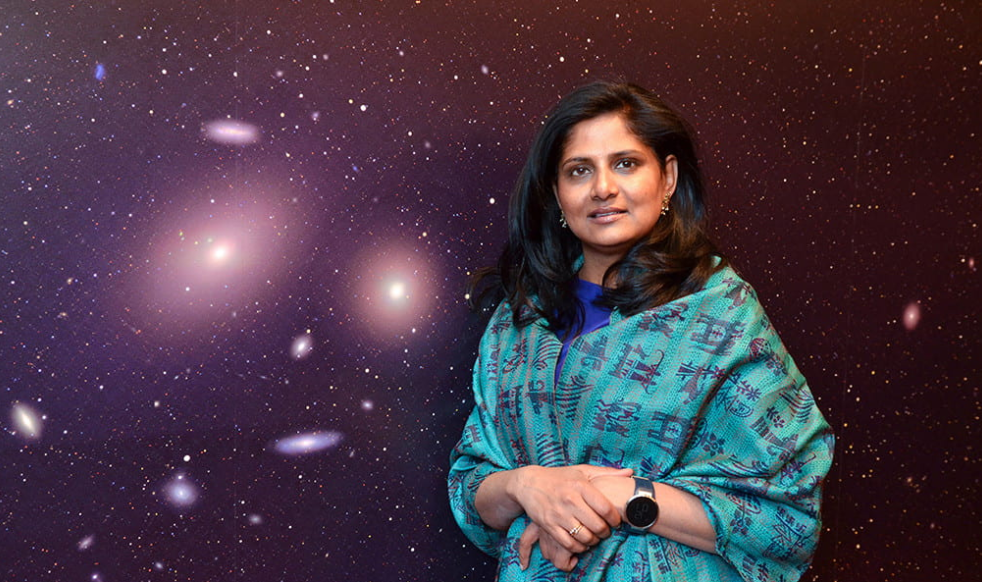Priyamvada Natarajan, a Yale theoretical astrophysicist who works to map the unseen universe, has been elected a fellow of the American Astronomical Society (AAS) for her groundbreaking work in dark matter and black hole physics.
AAS announced the election of 21 new fellows on Feb. 1, 2024 in recognition of the Ms. Natarajan’s work to enhance humanity’s scientific understanding of the universe.
Natarajan, the Joseph S. and Sophia S. Fruton Professor and Chair of Astronomy and professor of physics in the Yale Faculty of Arts and Sciences, was selected for “seminal contributions to our understanding of the nature of dark matter and black hole physics, and for the development of a brand-new framework that enables mapping the detailed distribution of dark matter on small scales within galaxy clusters using gravitational lensing,” AAS said in its election announcement.
Among her many honors, Natarajan is an elected fellow of the American Academy of Arts and Sciences, the American Physical Society, and the American Association for the Advancement of Science. She also is the recipient of Guggenheim and Radcliffe fellowships.
Priyamvada Natarajan work has helped us reach to the antiquity of time by discovering the glimmers of an ancient quasar. Using a pair of space borne telescopes, Natarajan and her research team has found UHZ1, just 450 million years after the Big Bang and far outside our own galaxy. Moving farther away as the universe expands, its light took about 1.5 billion years to reach our telescopes.
“It implies that the early universe was quite active,” Natarajan said of the discovery. “We were starting to build a picture of what looks like vigorous star formation; now we see that there was pretty vigorous black hole growth, too.”
At Yale, where she has been a faculty member since 2000, Natarajan is director of the Franke Program in Science and the Humanities, which fosters communication, mutual understanding, collaborative research, and teaching among diverse scientific and humanistic disciplines.
“I am delighted and honored to be recognized by my peers, which is super special,” Natarajan said. “I am so grateful and thrilled for the reactions I’ve had to my research work, and accolades such as this are a wonderful icing on the cake.”
AAS, established in 1899, is a major international organization of professional astronomers, astronomy educators, and amateur astronomers. Its 8,000 members also include physicists, geologists, engineers, and others whose interests lie within the broad spectrum of subjects now comprising the astronomical sciences.
Reference: news.yale.edu

 49 Views
49 Views 0 comments
0 comments
Comments